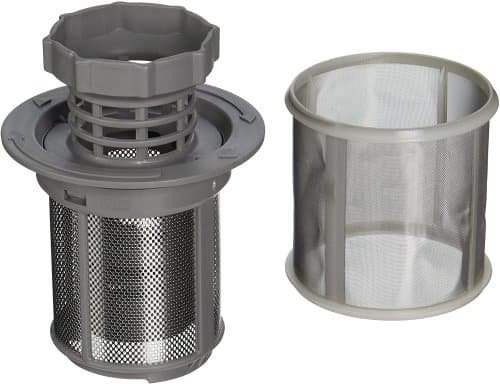Dishwashers are a modern convenience that many of us can’t imagine living without. However, there’s nothing more frustrating than a dishwasher that refuses to drain properly or leaves your dishes still dirty after a cycle.
In this article, we will guide you through the process of unblocking your dishwasher, ensuring it functions efficiently and saves you from the hassle of handwashing your dishes.

Table of Contents
Why Is My Dishwasher Blocked?
Before we dive into the steps to unblock your dishwasher, let’s understand why it might get blocked in the first place. Common reasons include:
1. Food Debris
Over time, food particles can accumulate in the dishwasher’s filters and drainage system, leading to blockages.
2. Grease Buildup
The residue from greasy dishes can create a thick sludge in the dishwasher’s pipes, impeding water flow.
3. Hard Water Deposits
Mineral deposits from hard water can accumulate in the dishwasher, clogging spray arms and nozzles.
4. Foreign Objects
Sometimes, small objects like utensils or glass shards can get lodged in the dishwasher’s mechanisms, causing blockages.
Tools You’ll Need
Before you begin, gather the following tools:
- Screwdriver
- Plunger
- Baking soda
- Vinegar
- Toothbrush
- Bucket
- Safety gloves

Step-by-Step Guide
Now, let’s get into the nitty-gritty of unblocking your dishwasher:
1. Safety First
Always start by turning off the dishwasher and disconnecting it from the power source. Safety should be your top priority.
2. Check the Drain
Inspect the dishwasher’s drain to see if there’s any visible debris. Remove any food particles or foreign objects with your hands or a paper towel.
3. Remove the Filters
Most dishwashers have filters that can be easily removed. Refer to your dishwasher’s manual to locate and take out the filters. Rinse them thoroughly under running water to remove any clogs.

4. Plunge the Drain
If water is still not draining properly, use a plunger to create a vacuum seal over the drain opening and plunge a few times to dislodge any stubborn clogs.
5. Baking Soda and Vinegar
For a natural and effective solution, mix equal parts baking soda and vinegar to create a foaming reaction. Pour this mixture into the dishwasher and let it sit for about 15 minutes before running a hot water cycle.
6. Clean Spray Arms
Remove the dishwasher’s spray arms and clean them using a toothbrush to dislodge any buildup. Make sure water can flow freely through the spray nozzles.

7. Check the Drain Hose
Inspect the drain hose for any kinks, twists, or clogs. Straighten it out if needed and ensure it’s properly connected.
8. Test Run
Reconnect the dishwasher to the power source and run a short cycle to see if the blockage is cleared. If it’s still not draining properly, repeat the steps or consider professional help.
Conclusion
Unblocking a dishwasher may seem like a daunting task, but with the right tools and a bit of patience, you can save yourself from the inconvenience of a malfunctioning appliance.
Regular maintenance and following these steps can help keep your dishwasher running smoothly for years to come.
FAQs
1. How often should I clean my dishwasher?
- It’s a good practice to clean your dishwasher at least once a month to prevent blockages and maintain its efficiency.
2. Can I use chemical drain cleaners in my dishwasher?
- It’s not recommended as these chemicals can damage the dishwasher’s components. Stick to natural cleaning methods.
3. What if my dishwasher still doesn’t work after following these steps?
- If the issue persists, it’s best to call a professional dishwasher repair service to avoid further damage.
4. Can I use regular table salt to soften hard water in my dishwasher?
- Yes, adding a small amount of table salt to your dishwasher can help combat hard water stains.
5. Is it safe to use the dishwasher immediately after cleaning it?
- It’s advisable to run an empty cycle after cleaning to ensure any cleaning residue is completely rinsed away before using it for your dishes.
In this article, we’ve covered the essential steps to unblock your dishwasher and keep it in top working condition. By following these guidelines, you can enjoy the convenience of a sparkling clean load of dishes with every cycle.
